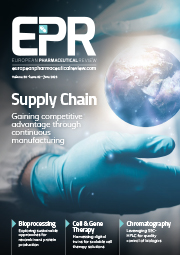Whitepaper: Techniques for developing Raw Material Libraries – sampling and scanning
Posted: 3 October 2016 | Viavi | No comments yet
For many years the pharmaceutical industry has utilized Near Infrared (NIR) spectroscopy to identify raw materials as they are received by a manufacturing facility. This is because NIR is highly specific for most organic compounds used in the formulation of tablets, capsules, crèmes, suspensions etc. The development of portable instrumentation has allowed organizations to become more mobile and use the technology at point of receipt and storage.
Background…
Near infrared offers many practical advantages over mid-infrared spectroscopy for raw material identification, mainly due to ease of sampling and robustness of instrumentation. NIR is also complimentary to Raman Spectroscopy and both methods should be used in tandem to maximize synergies.
Where to start…
Plan your development based on the 80:20 rule, i.e. what are the 20% of materials that come in 80% of the time. It is easy then to find the materials that will provide the most benefits up front in terms of quality assessment and efficiency.
Make a list of raw materials incoming to the facility and assess their history for past failures or deviations. Also seek materials that don’t come in as often, but require lengthy and tedious laboratory analyses. For materials that come in only once or twice a year, these will not typically give you the benefits upfront, so schedule those materials for second or even third phase library developments.
This whitepaper is restricted - login or subscribe free to access


Why subscribe? Join our growing community of thousands of industry professionals and gain access to:
- bi-monthly issues in print and/or digital format
- case studies, whitepapers, webinars and industry-leading content
- breaking news and features
- our extensive online archive of thousands of articles and years of past issues
- ...And it's all free!
Click here to Subscribe today Login here
Related content from this organisation
- Viavi MicroNIR™ Tablet Probe unlocks accelerated analysis of pharmaceutical tablets & pills, food manufacturing and seed quality
- Viavi Solutions, Inc
- NIR In-Depth Focus 2017
- NIR Spectroscopy for Assessing Blend Uniformity in the Pharmaceutical Industry
- Application note: Implementing MicroNIR™ family of sensors for PAT/QbD applications






